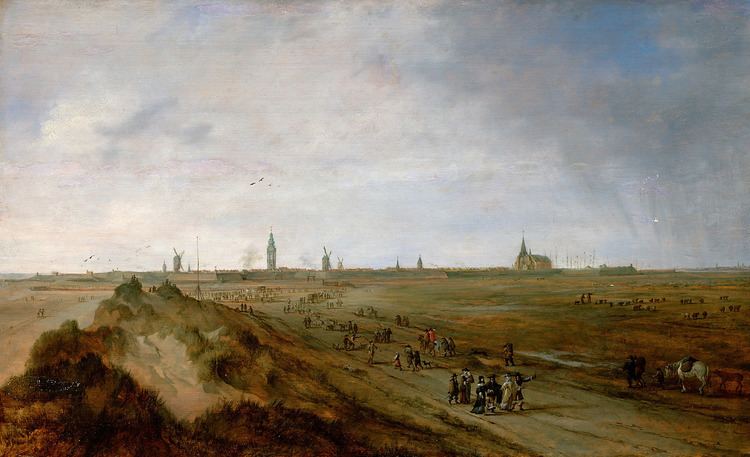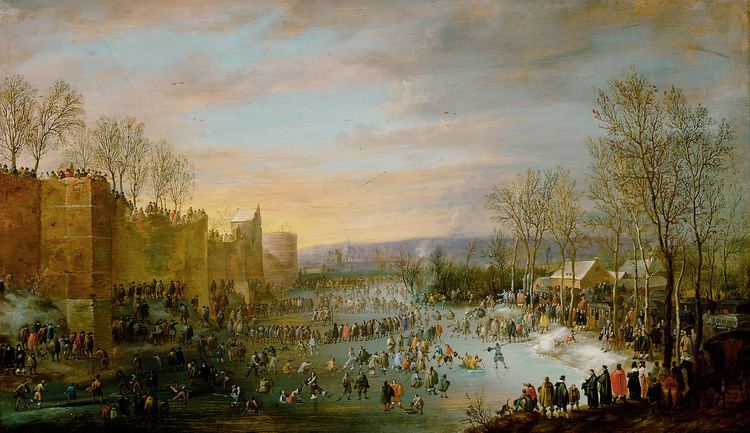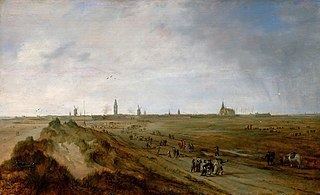Name Robert den Died 1668, Bergues, France | Parents Gaspar van den Hoecke | |
 | ||
Robert van den Hoecke (30 November 1622 in Antwerp – 1668 in Bergues-Saint-Winoc) was a Flemish Baroque painter and engraver of principally battle scenes in the manner of Pieter Snayers as well as of landscape paintings and still lifes.
Contents

Life

He was the son of the painter Gaspar van den Hoecke and the brother of Jan van den Hoecke. Born in Antwerp, he was a pupil of his father. He became a master in the city's Guild of St. Luke in 1644–45. In 1649 van den Hoecke left Antwerp for Brussels where he was the court painter of Archduke Leopold Wilhelm of Austria, the governor of the Habsburg Netherlands. From 1661 until his death in 1668 he worked in Bergues-Saint-Winoc as Côntroleur des fortifications pour le service de sa Maj. en Flandre (Controller of fortifications in the service of his Majesty in Flanders).
Gonzales Coques painted his portrait in the form of an allegory of sight, which was part of a series on the five senses — which shows him as "Côntroleur des fortifications" holding a plan and wearing a belt.
Work
Some thirty paintings by Robert van den Hoecke are conserved in public museums of which only two are dated – a Winter Landscape in the Kunsthistorisches Museum, Vienna (1649) and a Military Camp in the Musée des Beaux-Arts in Dunkerque. The majority of his works consists of battle scenes painted on small canvases, often set at night and including a great many figures. As controller of the fortifications of Flanders, he painted many views of camps, battles, and cities. He is also known for (winter) landscapes and still lives. The Musée Municipal Bergues holds a religious painting representing St Matthias.
His etchings mainly represent military subjects and are characterized by a great correctness, a fine touch and a quick point.
His work is well represented in the Kunsthistorisches Museum, Vienna.
He was also an architect of note.
